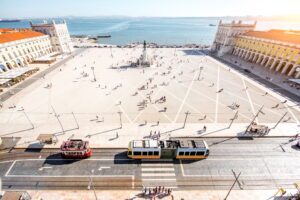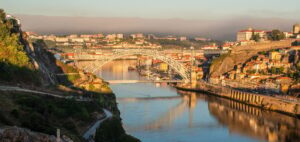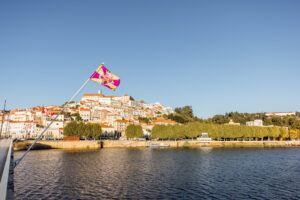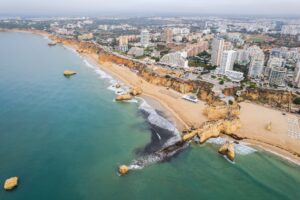Portugal: A Hidden Gem Waiting to Be Discovered
Portugal often gets overshadowed by its larger neighbor Spain, but this Atlantic-facing nation deserves a spotlight all its own. From the cobblestone streets of medieval towns to the dramatic coastlines of the Algarve, Portugal offers an intoxicating blend of history, culture, cuisine, and natural beauty that captivates every traveler who ventures beyond the typical European tourist trail.
This compact country, roughly the size of Indiana, packs an incredible diversity of experiences into its borders. Whether you’re drawn to the fado-filled nights of Lisbon, the port wine cellars of Porto, the fairy-tale castles of Sintra, or the golden beaches of the south, Portugal promises memories that will linger long after you’ve returned home.
The Soul of Portuguese Culture
Portugal’s culture is a tapestry woven from centuries of maritime exploration, Moorish influence, and deep Catholic traditions. The Portuguese concept of “saudade” – a bittersweet longing or nostalgia – permeates much of the country’s artistic expression, from the haunting melodies of fado music to the intricate blue and white azulejo tiles that adorn buildings throughout the nation.

The Portuguese are known for their warmth and hospitality. Don’t be surprised if locals go out of their way to help you navigate their cities or recommend their favorite hidden restaurants. This genuine friendliness, combined with the country’s relatively low crime rates, makes Portugal one of Europe’s safest and most welcoming destinations.
Family remains central to Portuguese life, and this is evident in everything from the multigenerational dining tables at traditional restaurants to the way entire neighborhoods come together for local festivals. As a visitor, you’ll often find yourself inadvertently invited into this extended family atmosphere, especially in smaller towns and rural areas.
Lisbon: Where History Meets Modernity
Portugal’s capital city is a masterclass in contrasts. Ancient trams rumble up steep hills past centuries-old buildings, while modern galleries and innovative restaurants occupy former industrial spaces. Lisbon’s seven hills offer countless viewpoints (miradouros) where you can pause to take in panoramic views of the Tagus River and the city’s distinctive red-tiled rooftops.

The historic Alfama district is Lisbon’s oldest neighborhood, a labyrinth of narrow streets where laundry hangs from wrought-iron balconies and the melancholy sounds of fado drift from tavern doorways. Here, you can spend hours wandering without a map, discovering hidden squares, ancient churches, and family-run restaurants that have been serving the same recipes for generations.
The Bairro Alto transforms from a quiet residential area by day into Lisbon’s bohemian nightlife hub after dark. University students and locals crowd into tiny bars that spill onto the streets, creating an electric atmosphere that continues well into the early hours. For a more refined evening, head to one of the neighborhood’s traditional fado houses, where Portugal’s national music form is performed in intimate settings that demand respectful silence from the audience.
The Belém district showcases Portugal’s Age of Discovery through magnificent monuments like the Jerónimos Monastery and the Belém Tower. These UNESCO World Heritage sites stand as testaments to the wealth and power Portugal once commanded through its maritime empire. Don’t leave Belém without trying the original pastéis de nata (custard tarts) from Pastéis de Belém, where the secret recipe has been guarded since 1837.
Porto: The Soulful Northern Capital
Porto exudes a grittier, more authentic charm than Lisbon. This UNESCO-listed city sprawls along the Douro River, its medieval core crowned by the twin-towered cathedral and connected to the port wine lodges of Vila Nova de Gaia by the iconic Dom Luís I Bridge.
The Ribeira district along the riverfront is Porto’s heart and soul. Colorful buildings with crumbling facades house restaurants, bars, and small shops, while the narrow streets echo with the sounds of conversation and clinking glasses. The contrast between the district’s obvious age and the energy of its inhabitants creates an atmosphere that feels both timeless and vibrantly alive.

Porto’s relationship with port wine runs deeper than mere commerce – it’s a cultural identity. The wine lodges across the river in Vila Nova de Gaia offer tastings and tours that reveal centuries of tradition and craftsmanship. Even if you’re not typically a wine enthusiast, the stories of the families and companies behind these vintage ports provide fascinating insights into Portuguese history and culture.
The city’s azulejo tradition reaches its pinnacle at São Bento Station, where 20,000 hand-painted tiles depict scenes from Portuguese history. The nearby Livraria Lello, with its neo-Gothic architecture and stunning wooden staircase, is often cited as one of the world’s most beautiful bookstores and reportedly inspired elements of the Harry Potter series.
The Enchanted Landscapes of Central Portugal
Central Portugal rewards travelers who venture beyond the major cities with some of the country’s most stunning and diverse landscapes. The medieval village of Óbidos, encircled by 14th-century walls, feels like stepping into a fairy tale. Its whitewashed houses adorned with bright blue and yellow trim line cobblestone streets so narrow that two people can barely pass. The village is famous for its annual chocolate festival and its ginjinha, a sour cherry liqueur traditionally served in edible chocolate cups.

The Monastery of Batalha stands as one of Europe’s finest examples of Gothic architecture, its intricate stonework and soaring spires a testament to Portuguese craftsmanship. Nearby, the fishing village of Nazaré offers two distinct experiences: the traditional lower town where fishermen still dry their nets on the beach, and the clifftop Sítio district, which provides breathtaking views over the Atlantic and is famous for hosting some of the world’s largest surfable waves.
The university city of Coimbra holds the distinction of housing one of Europe’s oldest universities, founded in 1290. The Biblioteca Joanina, the university’s baroque library, houses 300,000 ancient books in rooms so ornate they seem fit for royalty. Students here maintain centuries-old traditions, including the wearing of black capes and the performance of fado de Coimbra, a more refined version of Lisbon’s fado that originated in the university’s halls.
The Algarve: Portugal’s Golden Coast
Portugal’s southernmost region has earned its reputation as one of Europe’s premier beach destinations, but the Algarve offers much more than just sun and sand. The coastline stretches for over 100 miles, encompassing everything from dramatic cliff-backed beaches to peaceful fishing villages and bustling resort towns.
Lagos captivates visitors with its stunning rock formations and secluded coves. Ponta da Piedade, just south of the town, features golden limestone cliffs carved by centuries of Atlantic waves into arches, grottos, and towering pillars. Boat trips from Lagos harbor provide the best vantage points for appreciating these natural sculptures, while the nearby Praia do Camilo offers a more intimate beach experience accessible via a wooden stairway carved into the cliff face.

The historic town of Tavira presents a more refined face of the Algarve. Its Roman bridge spans the Gilão River, connecting a town center filled with traditional architecture, excellent restaurants, and a relaxed atmosphere that feels refreshingly uncommercialized. The nearby Ria Formosa Natural Park protects a complex ecosystem of lagoons, marshes, and barrier islands that serve as crucial habitat for migratory birds and marine life.
Sagres, at Portugal’s southwestern tip, was once considered the edge of the known world. The dramatic landscape of windswept cliffs and crashing waves creates an atmosphere of raw natural power that’s both humbling and exhilarating. The nearby Cape St. Vincent lighthouse marks continental Europe’s southwestern extremity, where spectacular sunsets paint the Atlantic in brilliant oranges and purples.
Culinary Adventures: More Than Just Seafood
Portuguese cuisine extends far beyond the bacalhau (codfish) for which the country is famous, though with reportedly 365 different codfish recipes – one for each day of the year – it’s clear that the Portuguese take their relationship with this ingredient seriously. The country’s culinary traditions reflect its maritime heritage, Moorish influences, and regional variations that make each area’s specialties unique.
Seafood naturally features prominently, from the hearty caldeirada (fish stew) of the coast to the grilled sardines that perfume Lisbon’s streets during the Saint Anthony festivals in June. The cataplana, a traditional copper cooking vessel resembling a wok with a lid, produces some of Portugal’s most memorable seafood dishes, typically combining fish or shellfish with vegetables, herbs, and white wine.



Meat dishes showcase Portugal’s interior regions, where the chouriço (spicy sausage) and presunto (cured ham) rank among Europe’s finest charcuterie. The Alentejo region’s porco preto (black pork) has achieved international recognition for its exceptional flavor, while the francesinha sandwich from Porto – layered with multiple meats and covered in cheese and a beer-based sauce – represents Portuguese comfort food at its most indulgent.
Portuguese pastries deserve special mention, with the pastéis de nata leading a impressive array of sweets that includes ovos moles from Aveiro, travesseiros from Sintra, and the almond-based doces conventuais (convent sweets) that originated in the country’s monasteries and convents. These pastries pair perfectly with Portuguese coffee culture, where the bica (espresso) is taken seriously and café conversations can stretch for hours.
Practical Travel Information
Portugal’s compact size makes it ideal for diverse itineraries. The train system connects major cities efficiently, while rental cars provide access to smaller towns and remote beaches. The country’s excellent highway system makes driving pleasant, though be prepared for tolls on major routes.
The best times to visit depend on your priorities. Spring (April to June) and fall (September to October) offer mild weather and fewer crowds, making them ideal for sightseeing and outdoor activities. Summer brings perfect beach weather but also peak crowds and higher prices, especially in the Algarve. Winter can be quite pleasant in the south, though rain is more common and some tourist facilities may be closed.
Accommodation options range from luxury pousadas (historic buildings converted into upscale hotels) to budget-friendly hostels and vacation in Portugal rentals. Many visitors opt for quintas (wine estates) in the Douro Valley or rural tourism properties that offer authentic experiences in traditional settings.
The Portuguese currency is the Euro, and credit cards are widely accepted in cities and tourist areas. However, smaller establishments and rural areas may prefer cash. English is commonly spoken in tourist areas and by younger Portuguese, though learning a few basic Portuguese phrases will be greatly appreciated by locals.
Regional Wines and Spirits
Portugal’s wine heritage extends far beyond port, encompassing diverse regions that produce distinctive styles often using indigenous grape varieties found nowhere else in the world. The Douro Valley, while famous for port, also produces exceptional dry red wines from the same terraced vineyards that create one of the world’s most spectacular wine landscapes.

The Dão region in central Portugal creates elegant reds and whites that pair beautifully with the region’s hearty cuisine, while the coastal Vinho Verde region produces light, slightly sparkling wines perfect for warm weather drinking. The Alentejo, Portugal’s largest wine region, has gained international acclaim for its full-bodied reds and innovative winemaking techniques.
Portugal’s spirit traditions include aguardente, a grape brandy often aged in oak barrels, and ginjinha, the cherry liqueur particularly associated with Óbidos and Lisbon. These spirits often accompany traditional festivals and celebrations, providing insight into local customs and social traditions.
Festivals and Cultural Events
Portuguese festivals blend religious traditions, seasonal celebrations, and community spirit in colorful displays throughout the year. The Festa de São João in Porto (June 23-24) transforms the entire city into a street party, with people carrying plastic hammers to playfully tap strangers on the head while enjoying grilled sardines and sangria.
Lisbon’s Festival de Santo António (June 12-13) fills the Alfama district with the aroma of grilled sardines and the sounds of traditional music, while young couples exchange pots of basil with love poems attached. The Festival dos Tabuleiros in Tomar, held every four years, features a procession of young women carrying tall towers of bread decorated with flowers, creating one of Portugal’s most visually striking cultural events.
The harvest festivals in wine regions offer opportunities to participate in traditional grape picking and processing, often followed by community meals and folk dancing. These events provide authentic cultural experiences that connect visitors with centuries-old traditions still very much alive in modern Portugal.
Conclusion: Portugal’s Lasting Appeal
Portugal rewards travelers who approach it with curiosity and openness. This is a country where ancient traditions coexist with modern innovation, where world-class cities maintain village-like intimacy, and where the warmth of the people matches the golden light that seems to bathe everything in a magical glow.
Whether you’re drawn by the call of Atlantic waves, the aroma of grilled sardines, the haunting melody of fado, or simply the promise of discovering Europe’s best-kept secret, Portugal offers experiences that resonate long after departure. In a world of increasingly homogenized travel destinations, Portugal maintains its authentic character while welcoming visitors with genuine hospitality.
The country’s manageable size means you can experience dramatic diversity without exhausting travel times, while its reasonable costs make luxury experiences accessible to a wide range of budgets. From the historic trams of Lisbon to the pristine beaches of the Algarve, from the port lodges of Porto to the medieval castles of Sintra, Portugal creates travel memories that inspire return visits and enthusiastic recommendations to friends.
Portugal isn’t just a destination – it’s a discovery waiting to happen, a reminder that some of Europe’s most rewarding travel experiences still lie slightly off the beaten path, ready to reward those adventurous enough to seek them out.
https://www.visitportugal.com/en
